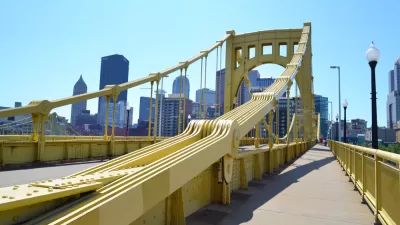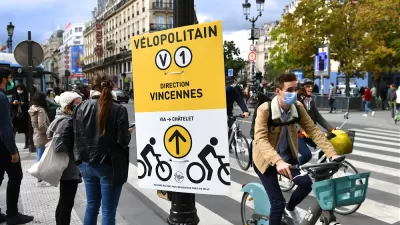Mike Senese spotlights a new television program on the Science Channel that uses innovative graphics to examine how the world's cities have been built to overcome the challenges of their natural environments and serve their citizens.
Senese examines the Science Channel’s new series Strip the City, which "uses oversized CGI effects to take a very deep look into the engineering behind some of the most iconic municipalities and the potentially disastrous natural elements they must overcome. Working with architects, engineers and historians, the producers have unearthed the specific elements that help San Francisco’s bridge survive tremors and Dubai’s towering skyscrapers stand firm in soft, unstable desert sands."
"But it’s the way that these scenarios are demonstrated that make the show so appealing," Senese explains. "Using a combination of real video and computer generated effects, layers of functioning cityscapes are peeled upwards to expose interior and underground features, which then get rolled back to show their internal workings."
“We’ve done quite a bit of big CGI shows in the past, but never anything quite like this, where we wanted to show organically and in real life settings how the infrastructure around people milling around fits and works,” says executive producer Carlo Massarella. “We wanted to do it in a way that literally apart took the city around the people that existed in it to show them the technology that might be just beneath their feet or in the train or in the subway system.”
The first six cities to be featured in the program include San Francisco, Dubai, Rome, London, Sydney and Toronto.
Strip the City premieres Tuesday, Feb. 5 on Science Channel.
FULL STORY: Peeling a City Apart to Show How Structures Survive Disasters

Maui's Vacation Rental Debate Turns Ugly
Verbal attacks, misinformation campaigns and fistfights plague a high-stakes debate to convert thousands of vacation rentals into long-term housing.

Planetizen Federal Action Tracker
A weekly monitor of how Trump’s orders and actions are impacting planners and planning in America.

In Urban Planning, AI Prompting Could be the New Design Thinking
Creativity has long been key to great urban design. What if we see AI as our new creative partner?

King County Supportive Housing Program Offers Hope for Unhoused Residents
The county is taking a ‘Housing First’ approach that prioritizes getting people into housing, then offering wraparound supportive services.

Researchers Use AI to Get Clearer Picture of US Housing
Analysts are using artificial intelligence to supercharge their research by allowing them to comb through data faster. Though these AI tools can be error prone, they save time and housing researchers are optimistic about the future.

Making Shared Micromobility More Inclusive
Cities and shared mobility system operators can do more to include people with disabilities in planning and operations, per a new report.
Urban Design for Planners 1: Software Tools
This six-course series explores essential urban design concepts using open source software and equips planners with the tools they need to participate fully in the urban design process.
Planning for Universal Design
Learn the tools for implementing Universal Design in planning regulations.
planning NEXT
Appalachian Highlands Housing Partners
Mpact (founded as Rail~Volution)
City of Camden Redevelopment Agency
City of Astoria
City of Portland
City of Laramie




























